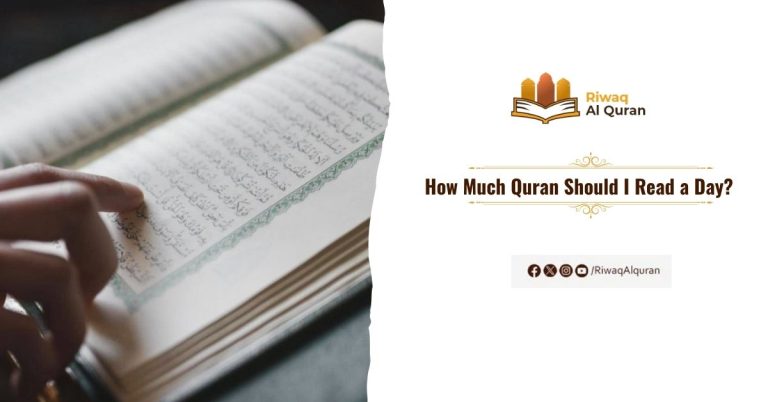Eid prayer, known as Eid Salah, is a joyful congregation performed on Eid al-Fitr and Eid al-Adha. It involves two special rakats with additional takbeers, celebrated outdoors if possible. Begin with intention and the grand takbeer, recite Quranic verses, then bow and prostrate in reverence. Listen to the inspiring Eid Khutbah afterward. It’s a communal celebration of faith, open to all, and a cherished tradition for spiritual renewal and connection.
“Eid is coming”, such a happy phrase encourages each one to start preparing for Eid and with what it includes from social and spiritual activities.
Eid is a significant event for Muslims globally, highlighted by the communal prayer called Eid Salah. Whether it’s Eid al-Fitr, which marks the end of Ramadan, or Eid al-Adha, commemorating Prophet Ibrahim’s willingness to sacrifice his son, the Eid prayer carries profound importance.
Now, it’s important to refresh our memory about how to pray Eid prayer and sunnah practices to obtain the greatest reward from these blessed days.
This is a beginner-friendly guide aiming to provide clear and supportive instructions to help you learn confidently about how to pray Eid prayer. Plus discussing the topics related to Eid prayers such as Eid prayer dua and ruling Eid prayers at home, etc.
Table of Contents
What Is Eid Prayer?
Eid prayers, also known as Eid Salah or Eid Namaz, is a significant act of worship performed by Muslims on two major Islamic occasions: Eid al-Fitr and Eid al-Adha.
It is a special prayer consisting of two rakats performed in congregation (preferred in open spaces than mosques if possible), and followed by a sermon (Khutbah).
What Is The Importance Of Eid Prayer?
Eid prayer is a highly recommended practice (sunnah mu’akkadah) that promotes a sense of gratitude among Muslims and is celebrated with family and friends.
How Many Rakats In Eid Prayer?
The Eid prayer consists of two rakats with the additional Takbeers (saying “Allahu Akbar” multiple times at the same raka’h). This is what you say on your Eid prayer and it is what exactly makes this prayer unique from the 5 regular daily prayers.
What Are The Two Eid Prayers?
The two Eid prayers are:
1. Eid al-Fitr: This prayer is performed at the end of Ramadan, the Islamic holy month of fasting. It marks the beginning of Shawwal, the 10th month of the Islamic lunar calendar.
2. Eid al-Adha: This prayer is performed on the 10th day of Dhu al-Hijjah, the last month of the Islamic lunar calendar, and it coincides with the Hajj pilgrimage.


What Is The Difference Between the Eid al-Fitr Prayer And the Eid Al-Adha Prayer?
Would like here to mention the two most common questions about how to perform the Eid al-Fitr prayer and how to perform the Eid Adha prayer:
Both have the same practices as we will explain, in addition, the same takbeers number for each rakats, seven takbeers and five takbeers.
If this is your first time learning about the three types of prayers in Islam, you should understand the difference between each one. Click here to proceed directly:
Know More About The 3 Types of Prayers in Islam
What Is The Sunnah Acts Before Eid Prayers?
There are some acts established by the prophet to the Muslim community in order to prepare spiritually and formally to perform el Eid prayer.
Check the following points to know the Sunnah practices you should preferably follow:
1. Perform Ghusl:
Before attending the Eid prayer, it is recommended to perform ghusl (ritual purification), bathe your body, brush your teeth, and perfume your body with musk.
2. The Best Clothes You Have:
Pick the finest clothes you have to attend the Eid prayer, it’s a celebration!
3. Eat Dates Before Eid Salah:
It’s common in Eid al-Fitr to eat an odd number of dates before heading to the prayer, because this is what the prophet did before going to Eid salah.
However, it is preferable to fast from el fajr prayer until after Al Adha Eid prayer.
4. No Sunnah Prayers Before Eid Prayer:
There’s no voluntary prayer (Sunnah prayers) that should be done before going to pray the Eid prayer.
5. Set Your Niyyah For Eid Namaz:
The Eid prayer, like everyday prayers, needs putting your intention before heading to salah.
6. Feel Eid And Chant Takbeers:
It’s a sunnah to recite takbeers by saying “Allahu Akbar, Allahu Akbar. La ilaaha illa-llaah, wa-Allahu Akbar, Allahu Akbar, wa li-llaahil hamd” after leaving your house until you reach the mosque.
7. Vary Your Route Home:
Try your best to take a different route home than the one you used to arrive at the mosque, to go along with what our prophet, who would take different paths between his home and the prayer area.
How To Pray Eid Prayer?
Eid prayer is performed in a specific manner with additional Takbeers, and it is followed by a sermon. Here’s how to perform it:
1. Make The Intention (Niyyah)
Begin Eid prayer like the other daily prayers by making the intention in your heart and focusing all thoughts towards establishing one of the recommended Sunnahs from the prophet.
2. Start With The Opening Takbeer
Stand facing the Qiblah (direction of the Kaaba in Mecca) and raise your hands to your earlobes, saying “Allahu Akbar” to proceed with the prayer.
3. Recite The Additional Takbeers In The First Raka’h
After the initial Takbeer, say “Allahu Akbar” many times as the imam says, paying attention to raise your hands each time and then fold them over your chest.
These additional Takbeers distinguish the Eid prayer from other prayers, its seven takbeers in the first raka’h and five takbeers in the second raka’h.
4. Recite Al-Fatihah And Another Surah
Whether you perform Eid prayers at home or you’re praying in the mosque; After the Takbeers, recite Surah Al-Fatihah, followed by another short surah from the Quran.
The most common choice here in the first rakat of Eid prayer is Surah Al-Ala as the prophet did.
5. Complete The First Raka’h With Bowing And Prostrations
Like the everyday prayers, Eid prayers also include both Ruku and Sujood. After the imam finishes the short surah from the Quran, raise your hand to your ears, bend over by placing your palms on your knees, and repeat Ruku dua three times, saying “Glory to my Lord, the Greatest”.
Stand back up again when you hear the imam saying “Sami Allahu liman hamidah”, Then, quietly recite “Rabbana Wa Lakal Hamd.”
Now, move to Sujood motions as in regular prayers, then stand up for the second rakah; you should do all motions after the imam by listening to his takbeers.
6. Stand Upright For The Second Rakat With Additional Takbeers
In the second rakat, after standing up, say “Allahu Akbar” many times as the imam says, raising your hands each time.
7. Recite Al-Fatihah And Another Surah
In parallel, Listen to the imam while he recites Surah Al-Fatihah and repeat it also in silence, followed by another surah or parts from the Quran.
Surah Al-Ghashiyah is commonly recited in the second rakat of the Eid prayer.
8. Finalize The Second Rakah With Bowing, Prostrations, And Tashahhud
Perform the Ruku and Sujood as we explained in the first rakat, and be careful about following the imam’s motions but wait until he completes each one.
After the second sujood, readjust your body to the sitting position and recite the full quote of Tashahhud, which says:
“At-tahiyyatu Lillahi wa-salawatu wa’t-tayyibat, as-salamu ‘alayka ayyuhan-Nabiyyu wa rahmat-Allahi wa barakatuh. As-salamu ‘alayna wa ‘ala ‘ibad-Illah is-saliheen. ashhadu alla ilaha illallah wa ashhadu anna muhammadan ‘abduhu wa rasuluhu.
Allahumma salli ala Muhammadiw wa ala aali Muhammadin, kama sallayta ala Ibraheema wa alaa aali Ibraheema, innaKa Hameedum Majeed. Allahumma baarik ‘ala Muhammadiw wa alaa aali Muhammadin, kamaa baarakta ala Ibraheema wa alaa aali Ibraheema, innaKa Hameedum Majeed.”
Finally, conclude the prayer by Tasleem after the imam, turn your head to the right then to the left while saying “Assalamu alaikum wa Rahmatullah” once for each side.
9. Listen To The Khutbah
After completing the prayer, it is sunnah to listen to the Eid Khutbah delivered by the Imam. and it usually takes from 15 – 30 minutes, and the speech itself should address general topics about Islam or any Islamic issues like in the Jumaa prayer.
How To Perform Eid Prayer At Home?
If you miss the Eid prayer and want to make it up, or you are in a position to lead Eid prayers at home with your family or friends group, it is permissible (or mustahab) to perform Eid prayer anywhere, mosque, open spaces, and home.
Then regarding what is supposed to be done or how to pray Eid prayer at home, it’s the same steps as we explained previously without Khutbah after the prayer.
Is Eid Prayer Compulsory For Ladies?
No, it’s Sunnah for women and not obligatory. However, the Prophet (peace and blessings of Allah be upon him) encouraged women to perform and witness the Eid prayer at the prayer place with other Muslims.
How To Do Eid Namaz At Home For Ladies?
Women can perform the Eid prayer at home, either individually or in a small group with family members.
And about how to perform Eid prayers for ladies, the steps remain the same as those performed at the mosque.


Learn Quran, Arabic, And Islamic Studies Online With The Best Native Tutors
Riwaq Al Quran is a comprehensive online platform that offers personalized Quran, Arabic, and Islamic Studies Online classes for individuals of all ages and backgrounds.
Their experienced instructors use a structured curriculum to cover Tajweed, Tafsir, and Memorization, providing easy and effective access to learning the Quran.
The advanced online classes allow for seamless communication and interaction between students and teachers. Join Riwaq Al Quran for a deeper connection with the Quran.
We offer several courses such as:
- Online courses for kids.
- Online Quran classes for kids and adults.
- Online Arabic courses
- Online Ijazah courses
- Online Islamic Studies courses.
Here are a sample of our set of Quran Courses that will be helpful for you:
- Online Tafseer Course: Delve into Quranic meanings with our insightful online Tafseer course.
- Noorani Qaida Online: Learn Quranic basics efficiently through our Noorani Qaida online program.
- Online Quran Recitation Course: Enhance Quranic recitation skills through our expert-led online course.
- Online Tajweed Classes: Master Tajweed rules for beautiful Quranic recitation in online classes.
- Quran Memorization Online Course: Memorize the Quran effectively with our specialized online memorization course.
- Online Qirat Course: Explore diverse Qirat styles with our comprehensive online Qirat course.
- Online Quran Classes for Kids: Nurture a love for the Quran in kids through interactive online classes.
Conclusion
Eid prayer, known as Eid Salah or Eid Namaz, is a significant act of worship for Muslims celebrated on two major occasions: Eid al-Fitr and Eid al-Adha. It consists of two rakats performed in congregation, preferably in open spaces. Before starting, one should make a spiritual intention (niyyah) and follow with the opening takbeer.
The prayer includes additional takbeers in each rakat, distinguishing it from regular daily prayers. After reciting Al-Fatihah and another surah, the prayer concludes with bowing (ruku), prostration (sujood), and the final tashahhud.
Listening to the Eid Khutbah after prayer is also recommended. Eid prayer can be performed at home or in mosques, and while not obligatory for women, it is encouraged.
Finally, Eid Salah is a unique prayer and such a spiritual statue occurs twice a year, once at the end of Ramadan when celebrating Eid al-Fitr, and again when celebrating Eid al-Adha.
While it is highly recommended for men, women, and children, it is not obligatory. We would like to finalize this topic with Eid prayer dua which says: “May Allah accept (good deeds) from us and from you.”
May your Eid be filled with peace, happiness, and spiritual fulfillment. Eid Mubarak!


































